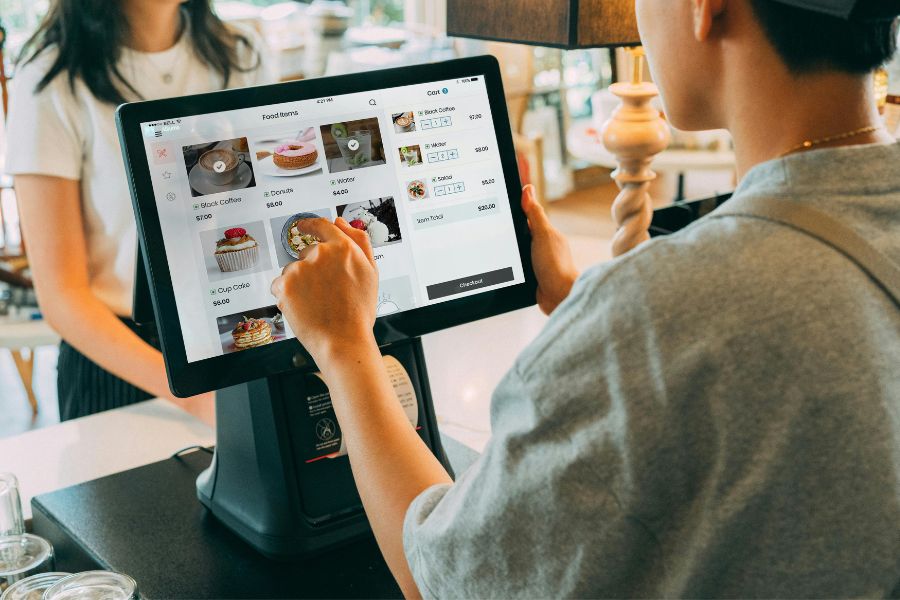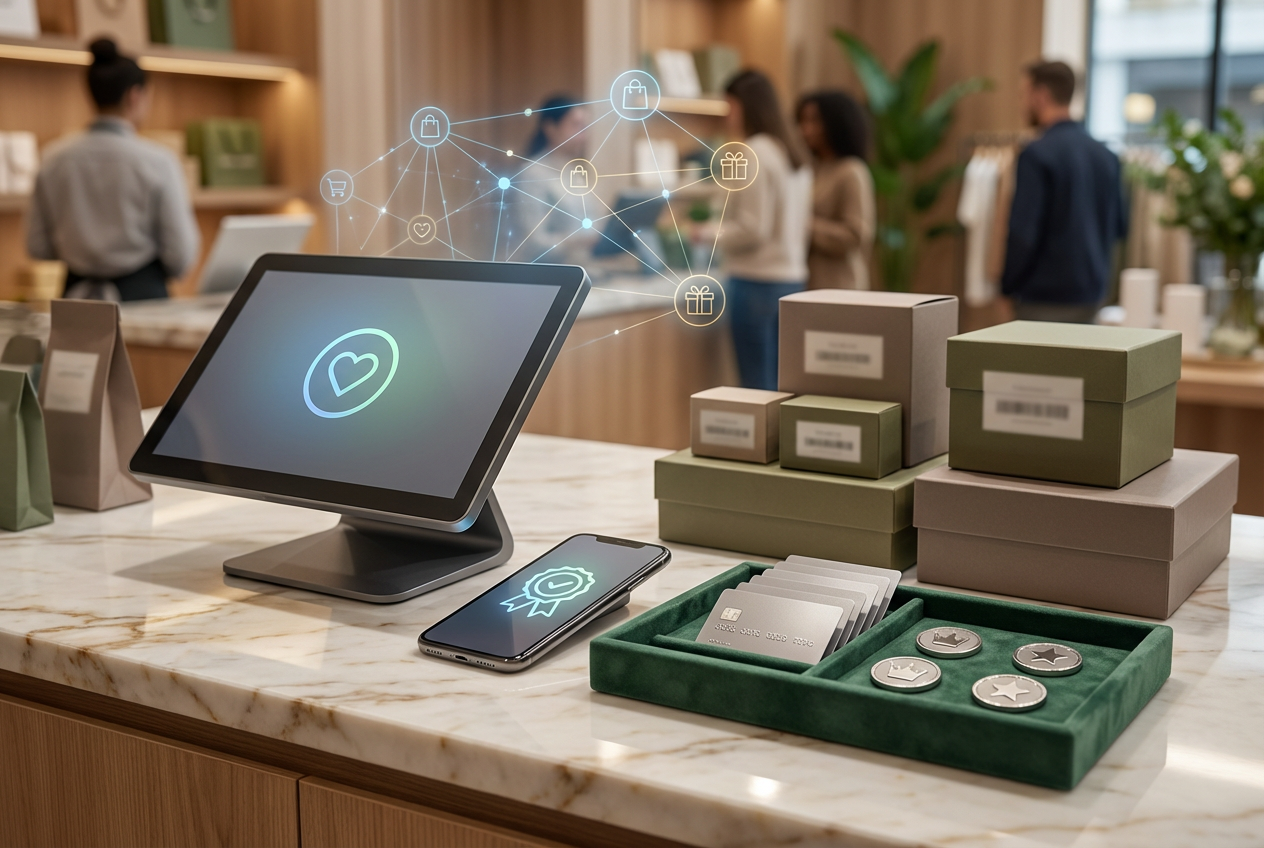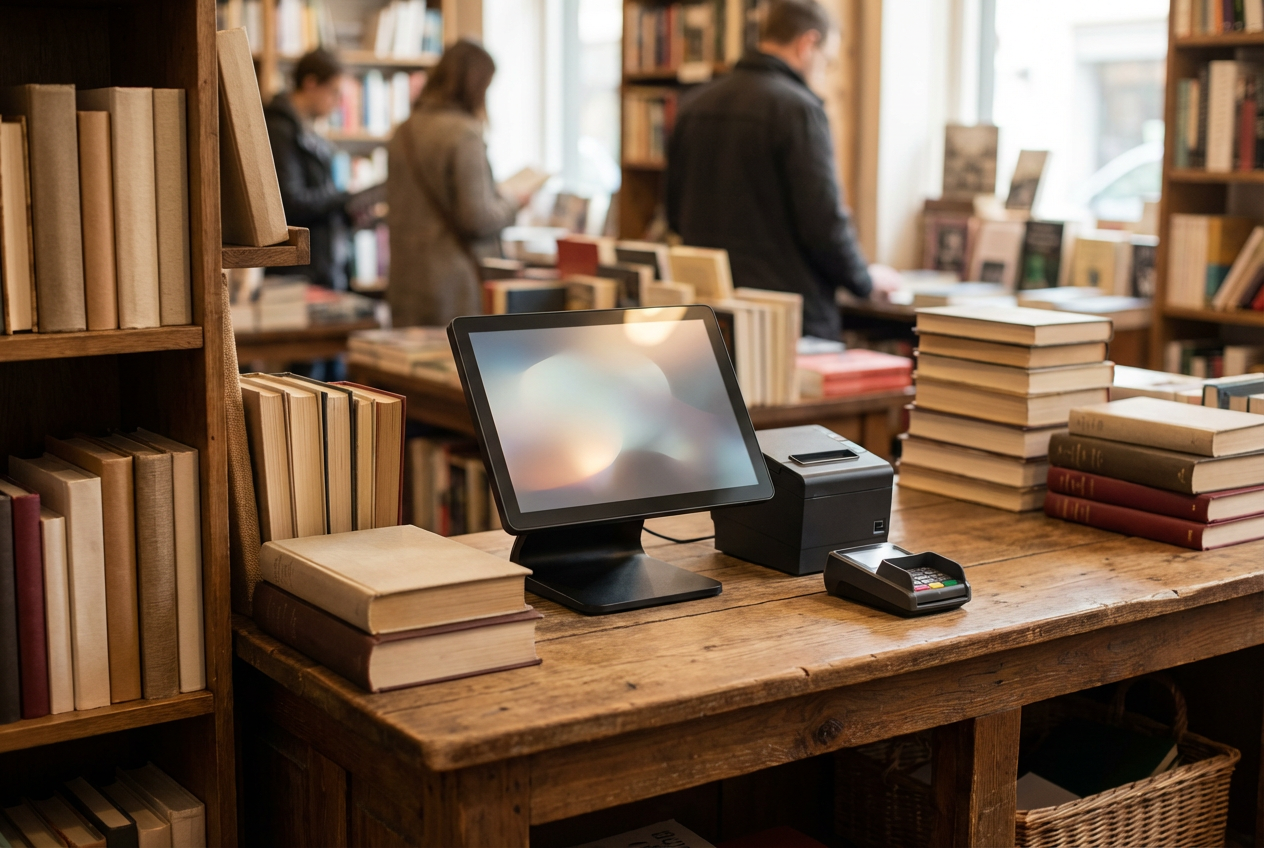Too many retailers still rely on manual counts, clunky spreadsheets, or separate systems that never quite ‘talk’ to each other. When stock goes missing or orders get delayed, it’s usually not the warehouse. It’s the software. Point of sale stock management fixes that. This ConnectPOS’s guide breaks down what it really means, why it matters in Thailand, and how to find a system that doesn’t slow your store down.
Highlights
- Smart POS systems in Thailand must handle both online and offline inventory to keep stock levels accurate across all sales channels.
- Local compliance and language support are deal-breakers for Thai businesses choosing POS tools that work with VAT, receipts, and staff training.
What Is Point of Sale Stock Management?
A point of sale (POS) system isn’t just a digital cash register. It handles everything tied to a sale: items sold, prices, payments, discounts, taxes, and receipts. Retailers are also grappling with a mountain of US $740 billion in unsold goods, showing why rock-solid inventory visibility matters long before markdown season begins. But when stock control joins the mix, that’s where it becomes far more valuable.
Stock management is about knowing exactly what’s in your store, warehouse, or backroom at all times. McKinsey finds that using advanced supply-chain analytics can lift revenue by about 3% by reducing stockouts and lost sales. It tracks what’s been sold, returned, moved, or restocked. It also flags low inventory and prevents overselling. A POS with built-in stock tools keeps this data flowing in real time.
Without this connection, it’s easy to lose track. Typical retailers forfeit roughly 4% of sales because items are out of stock on the shelf. Imagine a store sells out online but still shows full shelves in the POS. Or a staff member refunds an item, but stock doesn’t update. That’s how stockouts happen. And that’s why syncing inventory management software to the POS isn’t ‘nice to have’. It’s survival.
Why Thai Businesses Need Smarter POS Stock Tools Today
Thailand’s retail market isn’t slowing down. Total retail sales hit 4.51 trillion baht in 2024, up 6.02% year on year. The e-commerce sector served about 43.5 million shoppers last year and, according to The E-Commerce Association, is on pace for roughly US$32 billion in gross merchandise value by 2025.
Yet offline formats will still claim around 81.3% of spending in 2025. That means Thai businesses aren’t shifting fully online. They’re blending both. And that blend needs smarter systems behind the scenes.

Thai retailers are juggling physical stores, websites, and even pop-up stalls. But many still use separate tools for POS and inventory. That’s where the cracks show up. Stock gets lost between channels. Staff sell what’s already sold. Restocks come too late or too often. Starting in July 2024, Thailand began charging a 7% VAT on low-value cross-border parcels, raising the stakes for accurate landed-cost tracking inside every POS.
Click-and-collect is booming, but without synced stock data, stores struggle to fulfill orders. Customers show up expecting items that aren’t actually available. Or worse, staff cancel orders after checkout. These kinds of errors cost more than just money. They chip away at trust.
Modern POS tools fix this by pulling everything into one place. They help stores move fast, adjust stock across branches, and keep both shelves and screens up to date. Especially in Thailand, where payment methods, language, and tax rules need local support, having the right setup isn’t a luxury. It’s just smart business.
7 Advanced Point of Sale Stock Management in Thailand
Thailand’s retail scene isn’t one-size-fits-all. Whether you’re running a chain of minimarts or a weekend market stall, picking the right point of sale stock management can save hours and prevent costly mistakes.
►►► Optimal solution set for businesses: Multi store POS, Next-gen POS, Inventory Management Software (MSI), Self Service, Automation, Backorders
ConnectPOS
ConnectPOS stands out as a local-ready POS system tailored for retailers in Thailand. It combines real-time stock updates, warehouse-level tracking, and mobile convenience into one flexible platform. Whether you’re running a chain of minimarts or managing a furniture warehouse, ConnectPOS keeps inventory accurate and synced across channels.
- Real-time inventory sync: Stock levels update instantly after every sale, refund, or warehouse transfer. No manual syncing needed.
- Multi-store and omnichannel control: Manages inventory across branches, marketplaces, and eCommerce platforms in one place. Perfect for Thai retailers juggling offline and online.
- Integrations with NetSuite POS, Magento POS, Shopify POS, BigCommerce, and WooCommerce POS: Smooth data flow between POS and backend tools Thai businesses already use.
- Mobile-friendly with PWA checkout: Shoppers can scan, pay, and go from their phones. Great for events, pop-ups, and modern Thai storefronts.
- No hardware lock-in: Works on tablets, desktops, or existing POS gear. No need to start from scratch.
- Multi-warehouse management: Tracks stock across warehouses, stores, or even consignment corners.
- Real-time stock transfers: Move products between locations and get live updates as they travel.
- Supports Thai Baht and VAT: Generates tax-compliant receipts, and handles Thai currency out of the box.
- Thai-language interface and receipts: Makes training easier and improves day-to-day operations with local staff.
- Click and collect: Links online and in-store pickup smoothly, matching rising demand from Thai shoppers.
- Offline mode: Still sells, scans, and tracks inventory even when the internet drops.
- Built-in barcode printing and scanning: Makes stock checks and checkouts faster and less error-prone.
- User role permissions: Let managers approve transfers while staff only view or request stock.
- Auto low-stock alerts and reports: Notifies you before products run out and gives simple restock suggestions.
UP Solution (P2C)
UP Solution (P2C) is tailored for Thai convenience stores, beauty salons, and service counters. It’s focused on reliability and speed for daily operations. It’s not flashy, but it checks the boxes for retailers who want Thai-language support, multi-branch syncing, and local compliance.
- Branch-level inventory: Tracks stock levels and movements across multiple outlets.
- Barcode scanning: Speeds up product lookups and checkout.
- Thai-language menus: Easy for local staff to use.
- Thai VAT support: Automatically includes tax on receipts.
- Simple role settings: Basic access control for employees.
Synature proMiSe
Built for Thai minimarts, pharmacies, and grocery stores, Synature proMiSe blends retail POS with light warehouse features. It’s strong at product categorization, expiry tracking, and it works well for stores needing more than just point-of-sale.
- Stock by category and expiry: Great for FMCG and pharma items.
- Multi-branch support: Syncs inventory data across all locations.
- Thai VAT and language: Locally adapted interface and receipts.
- Accounting system compatibility: Links with Thai accounting tools.
- Label and barcode printing: Helps with product tagging and shelf updates.
Crazy Web Studio POS
Crazy Web Studio POS focuses on hospitality businesses like cafés, restaurants, and beach bars. It includes visual layouts, ingredient-level tracking, and real-time order updates. Stock management is simplified but tuned for food and beverage use.
- Real-time menu updates: Reflects kitchen availability on the POS.
- Ingredient tracking: Deducts stock based on orders.
- Tablet-friendly: Designed for mobile staff in fast-paced settings.
- Thai-language setup: Simplifies training and operations.
- Split billing and order notes: Useful for restaurants and group orders.
Retail HQ
Retail HQ is a hybrid POS and ERP system that suits Thai apparel, electronics, and chain retailers. It handles more complex workflows like restocking rules, product variants, and centralized inventory planning.
- ERP-style inventory tools: Supports reorder points and multi-level categories.
- Multi-store centralization: Inventory data funnels to a shared dashboard.
- Thai regulation support: Handles tax, currency, and compliance.
- User permissions: Gives advanced role controls for inventory managers.
- Sales history tracking: Ties stock movement to customer purchases.
Tagrain
Tagrain is a cloud-based POS built with Thai retailers in mind. Its light inventory system makes it a fit for small businesses selling at markets, events, or boutique stores.
- Offline-first mode: Works well in places with unstable internet.
- Product-level stock control: Tracks by SKU or variation.
- WooCommerce integration: Good for eCommerce expansion.
- Built-in loyalty module: Reward returning customers.
- Easy setup and pricing: Great entry point for POS beginners.
Loyverse POS
Loyverse POS is free to start and fits Thai salons, kiosks, and cafés. It’s simple, mobile-ready, and packed with just enough tools to manage a growing inventory without overwhelming staff.
- Low-stock alerts: Notifies you before items run out.
- Real-time inventory: Syncs data as soon as products are sold.
- Free basic plan: Keeps startup costs low.
- Barcode-ready: Easy stock input and scanning.
- Mobile interface: Works on smartphones and tablets.
POS System Comparison Summary in Thailand
| POS System | Thai Compliance | Multi-store Support | Offline Mode | Inventory Tools | ERP Integration | Price Range |
| ConnectPOS | Full Thai Baht + VAT, Thai UI | Full (Retail + Warehouse) | Yes (Full tracking) | Expiration dates, stock transfers, barcode, reports | Strong (ERP + eCom) | Low to High (Starts at $49/register) |
| UP Solution (P2C) | Partial VAT + Thai UI | Yes (Basic Sync) | Yes | Barcode, role control | Light (Local tools) | Low to Mid |
| Synature proMiSe | Full VAT + Thai interface | Yes (Multi-location) | Yes | Batch, expiry, warehouse | Compatible (Local acc.) | Mid |
| Crazy Web Studio | Yes (Thai UI) | Limited (F&B focus) | Yes | Ingredient tracking | Not ERP-focused | Low to Mid |
| Retail HQ | Full VAT + currency support | Yes (Retail Chains) | Yes | ERP-level inventory | Strong (POS + ERP) | High |
| Tagrain | Yes | Basic | Yes (Offline-first) | SKU tracking, auto-sync | Weak | Low to Mid |
| Loyverse POS | Thai receipts + basic UI | Limited | Yes | Alerts, barcode | Weak | Free to Mid |
How to Choose The Right Point of Sale Stock Management?
Finding the right POS isn’t just about price or brand. For Thai retailers, inventory priorities make or break daily operations. These questions help narrow things down:
Multi-location inventory tracking
Need to move stock across branches or track by warehouse? Look for POS systems that sync in real time and support transfer logs.
Omnichannel compatibility
Selling online and offline? The system should sync inventory across your website, physical store, and marketplaces without delays or mismatches.
Stock accuracy and real-time updates
Choose a POS that updates stock right after a sale, return, or adjustment. Delayed syncing causes overselling and customer frustration.
Barcode, batch, and serial number support
If your products have expiry dates or need traceability, batch tracking is a must. Barcode tools speed up checkout and make audits easier.
Low stock alerts and auto-reordering
Systems should warn you when products are running low. Some allow auto-purchase orders based on set thresholds.
Integration with other tools
Make sure your POS connects to accounting or eCommerce platforms. This saves time on reports and avoids double entries.
Offline capabilities
Stores in remote areas or mobile booths need POS systems that keep working when the internet drops.
User permissions and access control
Prevent inventory changes by unauthorized staff. Choose systems with role-based access and change logs.
Local support and customization
Thai-language support, local payment methods, and VAT compliance aren’t nice extras. They’re basic needs.
FAQs: Point of Sale Stock Management in Thailand
1. What is the difference between POS and stock management software?
POS handles sales and payments. Stock tools track product levels, movement, and restocks. The best systems combine both into one synced platform.
2. Can I use the same POS for online and offline stock tracking?
Yes. Many modern POS tools sync inventory across physical stores, websites, and marketplaces in real time.
3. Is cloud-based POS better for inventory control?
Usually, yes. Cloud systems give real-time data, automatic updates, and better connections with accounting or eCommerce tools.
4. What kind of businesses benefit most from POS stock management?
Retail shops, restaurants, salons, pharmacies, and warehouses. Any place that handles physical products will run smoother with better inventory tracking.
5. How do I know if a POS supports Thai-language or local payments?
Check for Thai-language UI, VAT-compliant receipts, and payment options like PromptPay or TrueMoney. Some POS providers specialize in Thai business needs.
Final Thoughts
Stockouts, messy spreadsheets, and missing products don’t just frustrate customers. They slow down growth. A smart point of sale stock management system ties everything together so stores can move faster and sell with confidence.
Retail in Thailand is changing fast. The tools need to keep up. ConnectPOS stands out as a local-ready solution that speaks Thai, syncs instantly, and works across every channel. Whether you’re scaling up or fixing daily bottlenecks, it’s worth checking what your POS can really do. Need help finding the right fit? Contact us to explore how ConnectPOS works for Thai retailers.
►►► Optimal solution set for businesses: Shopify POS, Magento POS, BigCommerce POS, WooCommerce POS, NetSuite POS, E-Commerce POS



